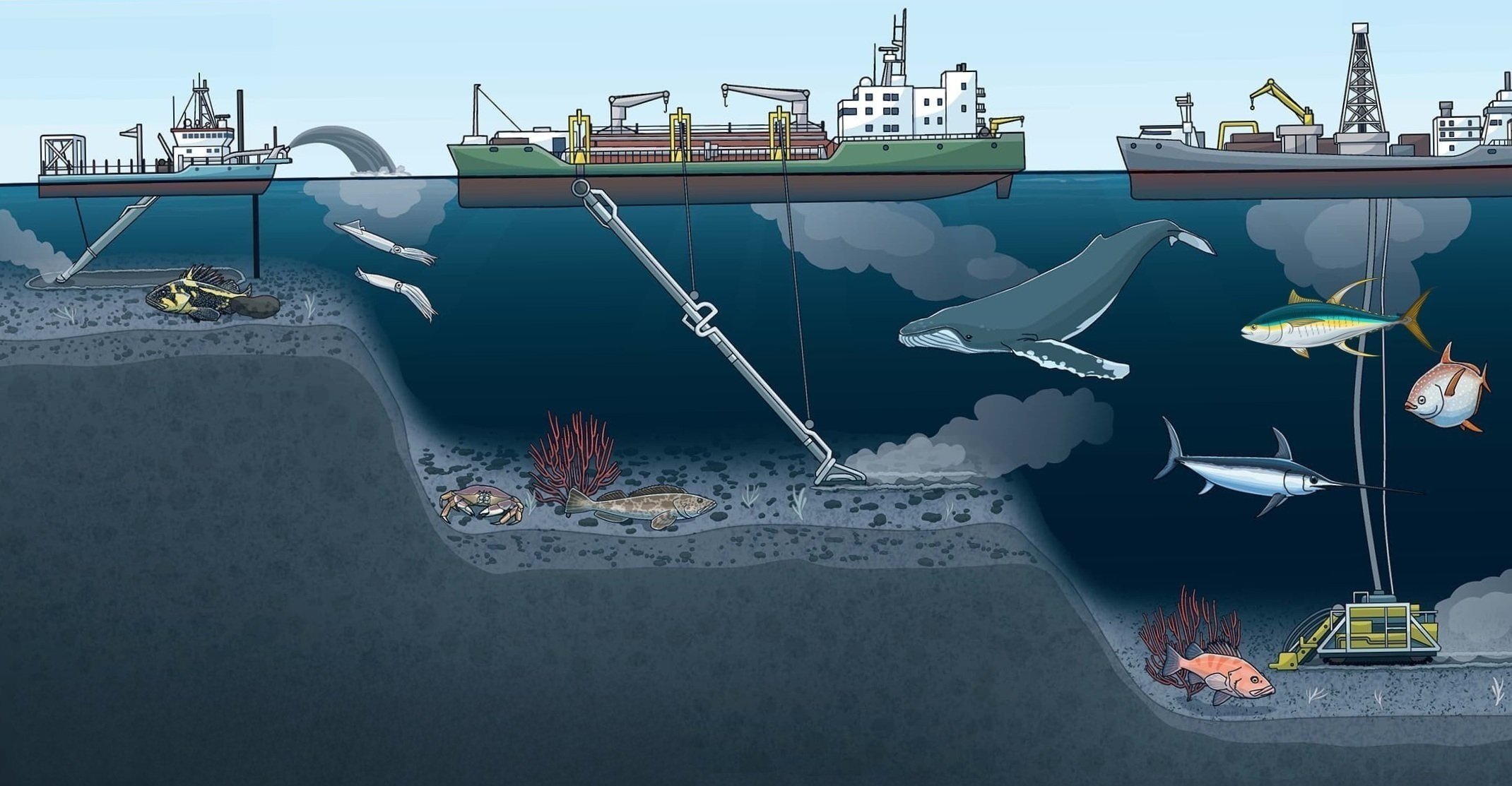Image: ©2020 The Pew Charitable Trusts
The deep sea is Earth’s largest and least understood ecosystem. It constitutes more than 90% of the planet’s biosphere, is home to remarkable and poorly known biodiversity, and is integral to food webs supporting fisheries that billions of people rely on globally.
Deep-sea mining, a rapidly emerging and potentially extensive industry involving the extraction of mineral resources from the deep seabed, poses a threat to the ocean and its inhabiting life. While the extent of deep-sea mining impacts is yet to be determined, it will certainly lead to significant habitat destruction and biodiversity loss, with many potential impacts on fisheries and seafood supply. These include:
The generation of sediment plumes that could travel long distances and may smother and/or prevent feeding or visual communication between organisms in the pelagic food web, directly or indirectly impacting the health of economically-important fish populations.
The release and spread of potentially toxic metals that could remain in the mesopelagic zone for much longer than sediment. The mesopelagic zone is the natural entry point for mercury into oceanic food webs and the human seafood supply. This raises concerns that the metals and toxins discharged into the mesopelagic zone could be absorbed by nearby species, some of which may be critical food sources for seafood species, leading to increased bioaccumulation and contamination of fisheries.
Noise and light pollution that may cause disruptions in/alterations to behavior of species leading to stress and changes of migratory routes, especially for small pelagics, tuna and tuna-like species. This could create unknown consequences in fishing mortality and fishing-effort displacements.
The above is especially concerning given the significant overlap between current fishing grounds and areas licensed for mineral exploration.
As producers, fishers, retailers, suppliers, and managers of sustainable seafood, we recognize the critical role of healthy and productive ecosystems in supporting sustainable fisheries and seafood supply chains. As such, we are deeply concerned about the aforementioned potential impacts of deep-sea mining on the health and resilience of the ocean, and the consequences it might bring in terms of the quality and quantity of seafood supply and the communities they support.
It is both logical and responsible to implement the precautionary approach vis-a-vis this new extractive industry that could drastically alter the marine environment we depend on with unknown and unintended consequences.
We, therefore, strongly recommend a pause on deep-sea mining until there is a clear understanding of the impacts the industry may have on the marine environment, its living resources, and those dependent on them. Further, we see it as mandatory that strong, scientifically-grounded regulations are in place before any exploitation contracts are granted by the International Seabed Authority.
References
Amon, D. J., Palacios-Abrantes, J., Drazen, J. C., Lily, H., Nathan, N., van der Grient, J. M., & McCauley, D. (2023). Climate change to drive increasing overlap between Pacific tuna fisheries and emerging deep-sea mining industry. npj Ocean Sustainability. https://doi.org/10.1038/s44183-023-00016-8
Bruland, K. W., Middag, R., & Lohan, M. C. (2013). Controls of Trace Metals in Seawater. Treatise on Geochemistry. Elsevier, Oxford. https://doi.org/10.1016/B978-0-08-095975-7.00602-1
Drazen, J. C., Smith, C. R., Gjerde, K. M., Haddock, S. H., Carter, G. S., Choy, C. A., ... & Yamamoto, H. (2020). Midwater ecosystems must be considered when evaluating environmental risks of deep-sea mining. Proceedings of the National Academy of Sciences. https://doi.org/10.1073/pnas.2011914117
Hauton, C., Brown, A., Thatje, S., Mestre, N. C., Bebianno, M. J., Martins, I., ... & Weaver, P. (2017). Identifying toxic impacts of metals potentially released during deep-sea mining—a synthesis of the challenges to quantifying risk. Frontiers in Marine Science. https://doi.org/10.3389/fmars.2017.00368
Robison, B. H. (2009). Conservation of deep pelagic biodiversity. Conservation Biology. https://doi.org/10.1111/j.1523-1739.2009.01219.x
Van der Grient, J.M.A. and Drazen, J.C. Potential spatial intersection between high-seas fisheries and deep-sea mining in international waters. Marine Policy. https://doi.org/10.1016/j.marpol.2021.104564









